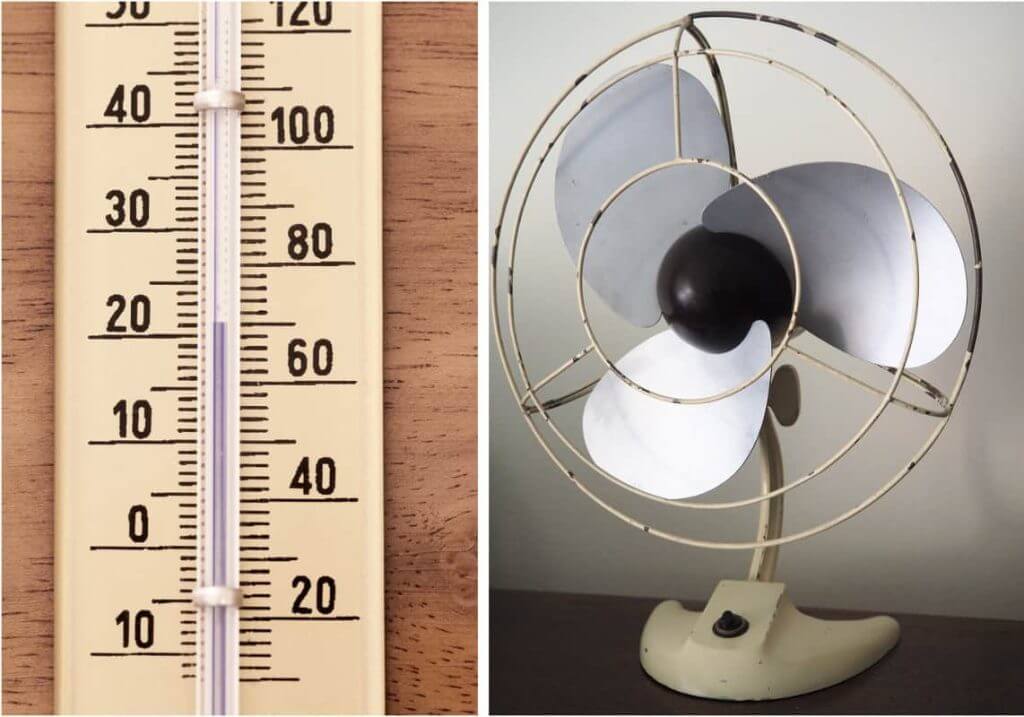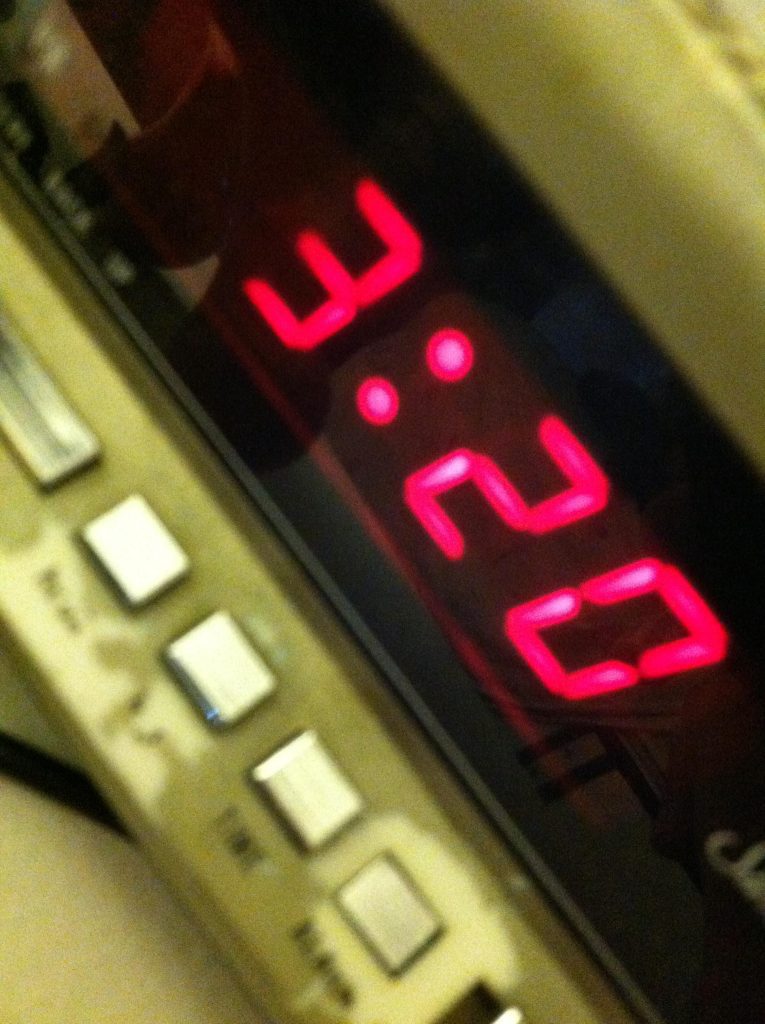
There’s nothing wrong with being a night owl, but it can be inconvenient, mostly because it doesn’t fit in with societal norms. If you want success in life, it’s better to be a lark. With this in mind, I changed my sleep schedule within three days and sustained it by making my mornings more enjoyable.
Find out how you can do the same.
My Story of Difficult Mornings and Sleepless Nights
I’d noticed a progressively worsening morning grogginess since my early teens. By the time I started work at 17, getting out of bed was a constant struggle and I’d usually arrive at the office unwashed and unshaven.
Going to bed earlier would have solved the problem, but I was never tired in the evening. In fact, that was when I came alive, regardless of how little I’d slept the previous night. Frustrated, I’d lie awake until the early hours.
To make up for lost sleep, I spent my weekends in bed. As a result, I’d lay sleepless all night Sunday and arrive at work in a state of exhaustion on Monday.
The number of times I overslept was embarrassing, and at some point I had to quit my office job.
Instead, I earned my living on the late shift in gas stations, call centers, bars, and restaurants.
Later, as a freelancer, I could set my own hours. So I chose to work when I was at my most creative, which was through the night.
Then, after acquiring new skills, came a lucrative job offer in the finance sector. But it would mean a daily 8 a.m. start.
I surely wasn’t going to turn it down because of my sleeping habits?
Chronotypes: Larks and Owls
Genetics determine our chronotypes.
This refers to our natural predisposition to wake early or late, which we call the “body clock,” “internal clock,” or “circadian rhythm.” Larks rise early and are at their most productive in the morning. Owls sleep late and remain active long after dark.
According to experts, this stems from earlier times when owls guarded the village by night while larks, who worked by day, rested. This could explain why more men on average tend to be evening chronotypes. By the same token, more women on average are larks, probably due to biological factors.
But statistics suggest that the majority of people fall somewhere between the two chronotypes and can adjust to varying schedules with little difficulty.
In spite of this flexibility, morning chronotypes are more highly revered. They are considered industrious, self-disciplined, reliable, and attentive. They never oversleep and never appear tired during what society deems “respectable hours.”
Due to oversleeping and general fatigue, owls are by contrast considered lazy, self-indulgent, unreliable, and inattentive .
And adapting their lifestyle according to their chronotype does little to improve matters. They are then regarded with suspicion for “keeping odd hours” and “turning night into day.”
Can You Change Your Chronotype?
With some effort, I’ve been a morning person for the past five years. But I always slip back into my old, nocturnal ways when I’m on vacation.
So, from experience, I don’t believe we can change our inherent chronotype. All we can do is try to keep it from ruling our lives.
But it does change with age. Due to hormonal fluctuations, the circadian rhythm returns to more or less its prepubescent state by 60, which is when we’re getting ready to retire.
This, of course, is of no use to young owls trying to hold down a job.
How I Changed My Sleep Schedule
Experts recommend going to bed 15 minutes earlier each week until your schedule is where you want it. Painless as this may be, I had just three days to turn into a lark.
On the first morning, I forced myself out of bed at 6 a.m. and struggled through the day in a state of exhaustion. As usual, I was wide awake by evening but remained resolute, turning in at 11 p.m. I slept badly and rose just as I was drifting off at 6 a.m. My sleep improved on the second night. And on the third, I turned in at 10 p.m.
The next step was to sustain my new sleep schedule and learn to enjoy my mornings like a true lark.
Tips for Sustaining a Morning-Orientated Schedule
An owl is naturally inclined to rest by day and play by night, but that doesn’t make him an insomniac.
Nevertheless, practices that treat insomnia can help an owl adopt and sustain a morning-orientated schedule.
Here are 11 tried and tested tips for sleeping and rising earlier, many of which helped me become a morning person.
1. Keep to an Established Bedtime Routine
A bedtime routine conditions the mind and body to go to sleep following a sequence of signals. Most important is that you go to bed at more or less the same time every night and get up at the same time every morning. Even on weekends.
Whenever possible, take a warm bath or shower a couple of hours before turning in, and spend the rest of the evening relaxing in your nightwear.
Before going to bed, turn off the lights, the TV, and other devices and appliances in a ritualistic manner. To put your mind at ease, check that you’ve set the alarm clock properly.
It’s said that the bedroom should be associated only with sleep and intimacy, but it is okay to perform final winding down exercises in bed. These can include reading, meditating, listening to meditative music, or jotting down the day’s events in a journal—more on that later.

2. Make Sure Your Sleep Area Is Comfortable
A restful environment is paramount to sleeping well.
Keep Your Bedroom Neat and Tidy
You’ll find you can relax far better in a clean and tidy room. And what could be more welcoming than a neatly turned down bed? Do this a while before you plan to get into it.
Mattress, Pillow, and Room Temperature
An owl can sleep like a log by day, even on a concrete floor. But the slightest discomfort at night and he’ll toss and turn till dawn.
Make sure your mattress and/or pillow are not flat and worn out. If so, replace them.
Your sleep area should ideally be 18–21°C (65–70°F) and well ventilated. Immoderate temperatures and stale air will keep you awake. During hot weather, take a cool (but not cold) shower before going to bed and put an electric fan on your nightstand.
Lighting
Wherever possible, stay away from fluorescent strips and energy-saving LED bulbs directly before bed. Similar to computer screens and other backlit devices, these emit blue light, which suppresses the production of melatonin. This is a hormone secreted by the pineal gland that makes us feel tired after dark. More on that later.
A red bulb in your bedside lamp could help induce sleep while you read.
If reading on a device, switch to night mode or install a blue light filter app.
Play Meditative Music
You may be able to drift off to the television, but, according to experts, gentle music is more effective. If you’re a classical fan, try Chopin’s Raindrops or the first movement of Beethoven’s Moonlight Sonata. Otherwise, ambient music without a climax works well. Important is that it doesn’t exceed 80 beats per minute. Or try white sounds, like surf and wind.
Use Essential Oil of Lavender
Studies have shown that essential oil of lavender slows the heartbeat and relaxes muscles, thus reducing stress to aid deeper sleep.
Sprinkle a few drops on your pillow and massage into the soles of your feet; it’s one of the few oils you can apply to the skin undiluted.

3. Watch Your Eating and Drinking Habits
As an owl, I’m inclined to eat late, which often sabotages my efforts to sleep early.
If you take your main meal in the evening, give it at least three hours to digest before going to bed. Otherwise, a turkey or tuna sandwich, a bowl of whole-grain cereal, or a glass of kefir could help you fall asleep more easily. Such foods contain tryptophan, which stimulates melatonin production.
Caffeinated beverages like coffee, back tea, and some sodas are essential to get owls going in the morning. But drink water and herbal teas from lunchtime onward if you want to sleep at night.
Avoid alcohol and nicotine before bed; these may seem calming, but they actually impair sleep quality. How good you feel in the morning depends on how well you’ve slept.
4. Melatonin
As a medicine, melatonin is recommended specifically for the treatment of jet lag and shiftwork sleep disorder (SWSD), a disparity of the circadian rhythm resulting from irregular work hours.
In other words, it can correct or change your sleep pattern, which is ideal if you’re an owl who wants to be a lark.
Taken regularly, it also works as a powerful antioxidant as well as relieving symptoms of GERD, which invariably attacks at night.
Melatonin is available only on prescription in many countries.
5. Get Out of Bed
If you lie in bed fretting about not being able to sleep, you’ll be awake until dawn.
Instead, fix yourself a mug of hot chocolate or warm milk sprinkled with nutmeg (which works as a mild sedative). Pursue a calming activity, like doing a jigsaw puzzle or, if you’re so inclined, yoga.
Or, even more effective, consider a tiresome household chore you could tackle. What’s stopping you from doing it right now? The mere thought sends me to sleep.
6. Practice Meditation or Keep a Journal
If an overactive mind is keeping you awake, it’s no wonder. Owls are at their most creative by night.
Or it could be the result of being so busy throughout the day that you literally don’t have time to think.
If the brain is to filter, delete, and store information relating to daily experiences as they occur, you need to take occasional breaks. If you don’t, it will begin its processing work when you go to bed, thus keeping you awake with unwanted thoughts.
You can sedate an overactive mind by practicing a simple form of meditation or writing in a journal as part of your bedtime routine.
Meditation
There’s no need to go into the lotus position or chant a mantra. It’s enough if you simply sit or lie with your eyes closed and observe whatever thoughts enter your head without actually analyzing them. Do this for between five and 20 minutes each evening, or whenever there’s a moment to spare during the day.
Keeping a Journal
Allow about ten minutes before going to bed to scribble down the day’s events, your thoughts on them, and anything that’s causing worry or concern.
This also helps if you’re unable to fall asleep again after waking in the middle of the night for no apparent reason.
The usual cause is unresolved problems niggling at the back of your mind, or postponing important tasks for a tomorrow that never comes. Making a definite decision to resolve such issues and putting it down in writing will allow you to switch off and go to sleep. Keep the journal beside your bed for this purpose.
7. Don’t Turn On the Lights When You Go to the Bathroom
If you have difficulty falling back to sleep after visiting the bathroom, it’s probably due to lighting.
Bright light tells the body and brain that it’s time to wake up and start the day—even if you’re an owl. To make matters worse, LED bulbs and fluorescent strips emit blue light, which, as previously mentioned, further compromises healthy sleep.
Solve this by installing dim night lights (ideally in red) to guide you, or keep a flashlight on your nightstand.
Frequent urination is often triggered by an underlying medical issue, so consult a health professional if you haven’t already. Otherwise, refrain from drinking three hours before going to bed.
8. Stop Watching the Clock and Use a Reliable Waking System
Watching the clock and worrying that you’ll have to struggle through the next day’s tasks in a fatigued state is not going to help you sleep at night. You’ll no doubt drop off when it’s almost time to get up and miss the alarm.
The remedy is to turn the clock away from you so that you can’t read it, and install a reliable waking system.
This is how I did it:
Set a loud alarm clock that has a “sleep” function for about half an hour before you need to get up. Additionally, plug a radio into a timer switch at the other end of the room, setting it for the exact time you have to get out of bed. The volume should be loud enough to wake the neighbors, thus forcing you to get up and turn it off.
Rest assured that oversleeping is impossible, your nights of lying awake and worrying should be over.
 Source: Courtesy of MGDboston at Morguefile.com
Source: Courtesy of MGDboston at Morguefile.com9. Stop Taking Daytime Naps and Get More Fresh Air and Exercise
If you wake to the slightest sound, you’re sleeping too lightly. A pair of earplugs would help, but what you really need is more fresh air and exercise.
Use the stairs instead of the elevator, and walk short distances instead of taking the car. More vigorous exercise should be taken several hours before bedtime since it may prevent you from feeling tired.
Typical of an owl is daytime napping, which can reduce nighttime sleep quality. Whenever you’re tempted to nod off, take a stroll instead.
10. Progressive Muscle Relaxation and the 4-7-8 Breathing Technique
Do these two simple exercises as soon as you lie down to sleep.
Progressive Muscle Relaxation
Progressive muscle relaxation (PMR) makes falling asleep easier and can enhance your sense of well-being. Easy to perform, it involves nothing more than systematically tensing and relaxing individual muscle groups.
Tense the muscles of the lower legs for ten to 15 seconds, relax, wait ten seconds, then tense the muscles of the thighs. Continue in this way, ending at the neck and face. It helps if you imagine stress and tension flowing from your body as each muscle group relaxes.
The 4-7-8 Breathing Technique
Follow with the 4-7-8 breathing technique, which is a form of yogic paced breathing. By slowing the heartbeat and forcing you to focus on your breathing instead of matters that might keep you awake, it enables deeper relaxation.
This is how it’s done:
- Breathe out through your mouth, making a whooshing sound.
- Close your mouth and inhale through your nose for four seconds.
- Hold your breath for 7 seconds.
- Breathe out through your mouth for 8 seconds.
This counts as one breath and should be repeated four times.
11. Create a Morning Routine to Look Forward to
Motivate yourself to get out of bed. Make your mornings enjoyable.
In spite of having become a lark, I’m still groggy when I get out of bed. But I look forward to my first cup of coffee and scrolling through my emails and social media. I give myself about 40 minutes for this.
I then go for an invigorating cold shave and shower before taking a 20-minute brisk walk to the office.
I arrive feeling top fit and raring to go. More so, I think, than the “real” morning people.
© 2024 J. Richardson
Related Posts
Disclaimer
The information provided by The Neat and Tidy Man (“we,” “us,” or “our”) on theneatandtidyman.com (the “site”) is for general informational purposes only. While we endeavor to keep the information up to date and correct, we make no representation or warranty of any kind, express or implied, regarding the completeness, accuracy, reliability, suitability, adequacy, validity, or availability of any information on the site. Under no circumstance shall we have any liability to you for any loss or damage of any kind incurred as a result of the use of the site or reliance on any information provided on the site. Your use of the site and your reliance on any information on the site is solely at your own risk.



